Tex-Mex sauce is a cornerstone of Tex-Mex cuisine, celebrated for its bold flavors and incredible versatility. Whether you’re marinating proteins, drizzling it over grilled vegetables, or adding it to skillet-cooked dishes, fajita sauce brings a burst of savory, spicy, and tangy notes that elevate your cooking. This comprehensive guide will teach you everything about fajita sauce, from its essential ingredients and variations to creative ways to use it in your kitchen.
Print
Homemade Fajita Sauce – Bold & Flavorful Tex-Mex Marinade
- Total Time: 5 minutes
- Yield: ½ cup (serves 4–6)
- Diet: Gluten Free
Description
This homemade fajita sauce is a perfect balance of smoky, tangy, and slightly sweet flavors. Made with a blend of chili powder, smoked paprika, fresh lime juice, and rich avocado oil, this versatile Tex-Mex sauce works as a marinade, a stir-fry glaze, or a delicious drizzle over tacos and grilled meats. Easy to prepare and packed with bold flavors, it’s a must-have for any Tex-Mex kitchen!
Ingredients
Spices:
- 1 tablespoon chili powder
- 1 teaspoon smoked paprika
- 1 teaspoon ground cumin
- 1 teaspoon garlic powder
- ½ teaspoon dried oregano
- ½ teaspoon salt (adjust to taste)
- ¼ teaspoon black pepper
Liquids:
- Juice of 2 limes (about ¼ cup)
- 2 tablespoons avocado oil (or olive oil)
- ¼ cup water
Sweetener & Extras:
- 1 teaspoon honey (or brown sugar)
- 1 teaspoon apple cider vinegar (for extra tang)
- 1 chipotle pepper in adobo sauce (optional, for smoky heat)
Instructions
Mix the Dry Ingredients: In a small bowl, whisk together the chili powder, smoked paprika, cumin, garlic powder, oregano, salt, and black pepper.
Add the Wet Ingredients: Pour in the lime juice, avocado oil, and water, whisking until smooth.
Incorporate Sweetness & Acidity: Stir in the honey and apple cider vinegar, ensuring everything is well combined.
Optional Smoky Heat: If using, finely chop the chipotle pepper and mix it into the sauce for an extra smoky-spicy kick.
Adjust Consistency: If the sauce is too thick, add a tablespoon of water at a time until it reaches the desired texture.
Store & Use: Transfer the sauce to an airtight container and refrigerate for up to 7 days. Shake or stir before use.
Notes
- For a richer sauce, add 2 tablespoons of tomato paste.
- For a creamier version, mix in 2 tablespoons of Greek yogurt or sour cream.
- To make it spicier, add extra chipotle peppers or a dash of cayenne pepper.
- Vegan option: Substitute honey with agave syrup or maple syrup.
- Storage Tip: This sauce can be frozen in small portions for up to 3 months.
- Prep Time: 5 minutes
- Cook Time: 0 minutes
- Category: Sauces & Marinades
- Method: Mixed, No-Cook
- Cuisine: Tex-Mex
What Makes Fajita Sauce Special?
At its essence, fajita sauce is a flavorful liquid mixture designed to transform simple ingredients into restaurant-quality dishes. Its combination of spices, acidity, and oil makes it incredibly versatile, whether used as a marinade or as a cooking sauce. The secret to its magic lies in its balance: the heat of chili powder and smoked paprika is mellowed by the richness of avocado oil, while lime juice or vinegar adds a bright tanginess.
Flavored vinegar is a fantastic addition to fajita sauce, introducing subtle layers of complexity. To learn more about how flavored vinegar can elevate your cooking, check out What Is Flavored Vinegar?.
A good fajita sauce also adapts to different heat levels and dietary preferences, making it suitable for a wide range of dishes. For example, a vegan version can omit honey or substitute it with agave syrup, while spice lovers can turn up the heat with extra chipotle peppers.

Key Ingredients in Fajita Sauce
A well-rounded fajita sauce starts with a few key components. Each ingredient plays a vital role in creating its signature flavor profile.
Spices: The foundation of fajita sauce lies in its spice blend, typically featuring chili powder, cumin, smoked paprika, garlic powder, and oregano. These spices create the earthy, smoky, and slightly peppery flavor that makes fajita sauce so distinctive.
Acidity: Lime juice is a staple ingredient that balances the richness of the oil and the heat from the spices. For an alternative, you can use apple cider vinegar or even flavored vinegars, which add depth and a unique twist.
Oil: The choice of oil affects both the flavor and texture. Avocado oil is ideal because of its neutral taste and high smoke point, making it perfect for marinating or cooking.
Sweeteners: Adding a touch of honey, brown sugar, or agave syrup provides balance, offsetting the spiciness with a hint of sweetness.
Optional Add-ins: Enhance the flavor by blending in chipotle peppers for smokiness, fresh cilantro for an herbaceous touch, or even a splash of soy sauce for umami.
If you’re looking to level up your marinades, fajita sauce is an excellent choice. Explore other great marinades with The Ultimate Guide: What Is the Best Thing to Marinate Meat In?.
Step-by-Step Recipe for Fajita Sauce
Making Tex-Mex sauce at home is quick, easy, and infinitely customizable. Here’s a foolproof recipe that you can adapt to suit your taste.
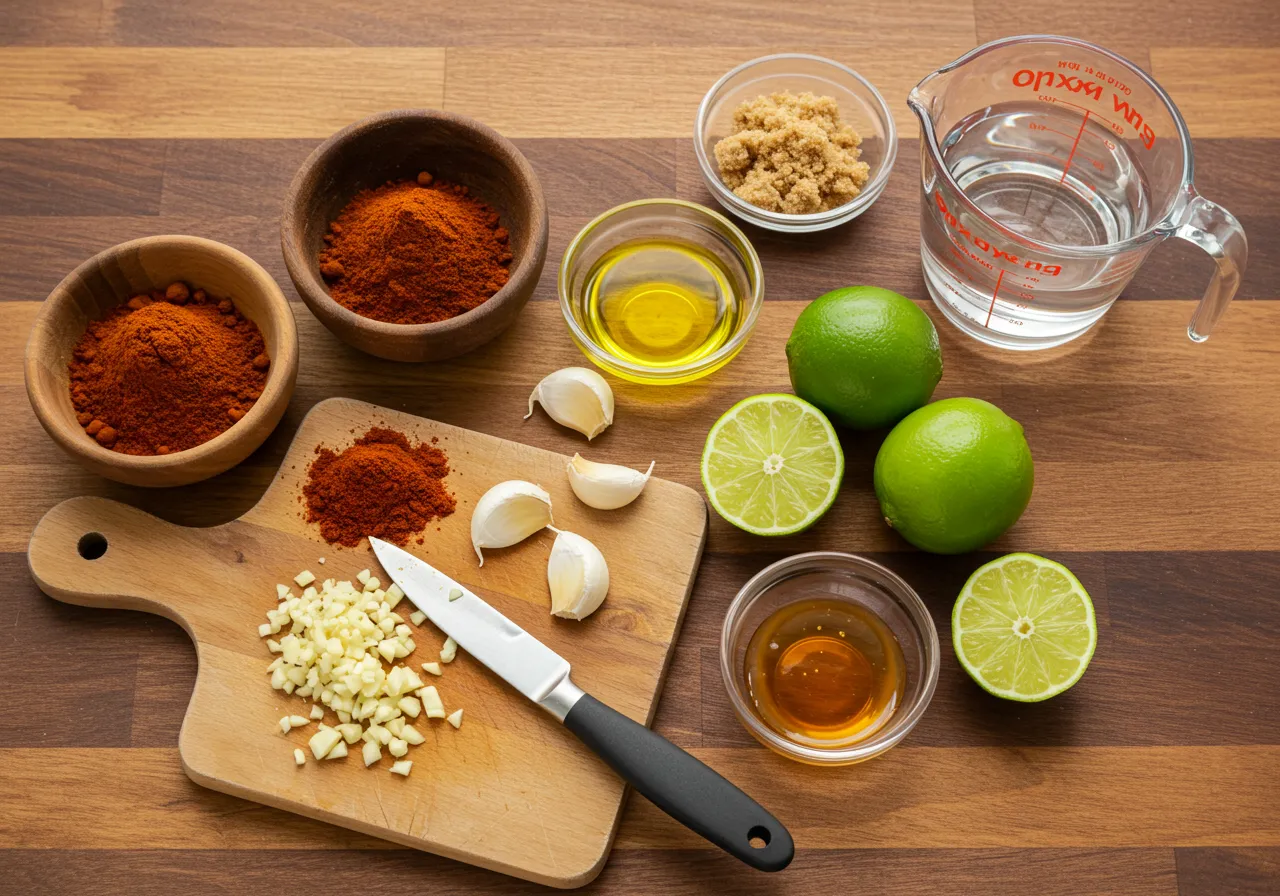
Ingredients
- 1 tablespoon chili powder
- 1 teaspoon cumin
- 1 teaspoon smoked paprika
- 2 cloves garlic, minced
- Juice of 2 limes
- 2 tablespoons avocado oil
- 1 teaspoon honey or brown sugar
- 1/4 cup water
Instructions
- In a bowl, mix the dry spices: chili powder, cumin, smoked paprika, and garlic powder.
- Add the lime juice and avocado oil, whisking until smooth.
- Stir in the honey or brown sugar to balance the flavors.
- Gradually mix in the water, adjusting the consistency to your preference.
- Keep the sauce in a sealed container in the fridge for up to seven days.
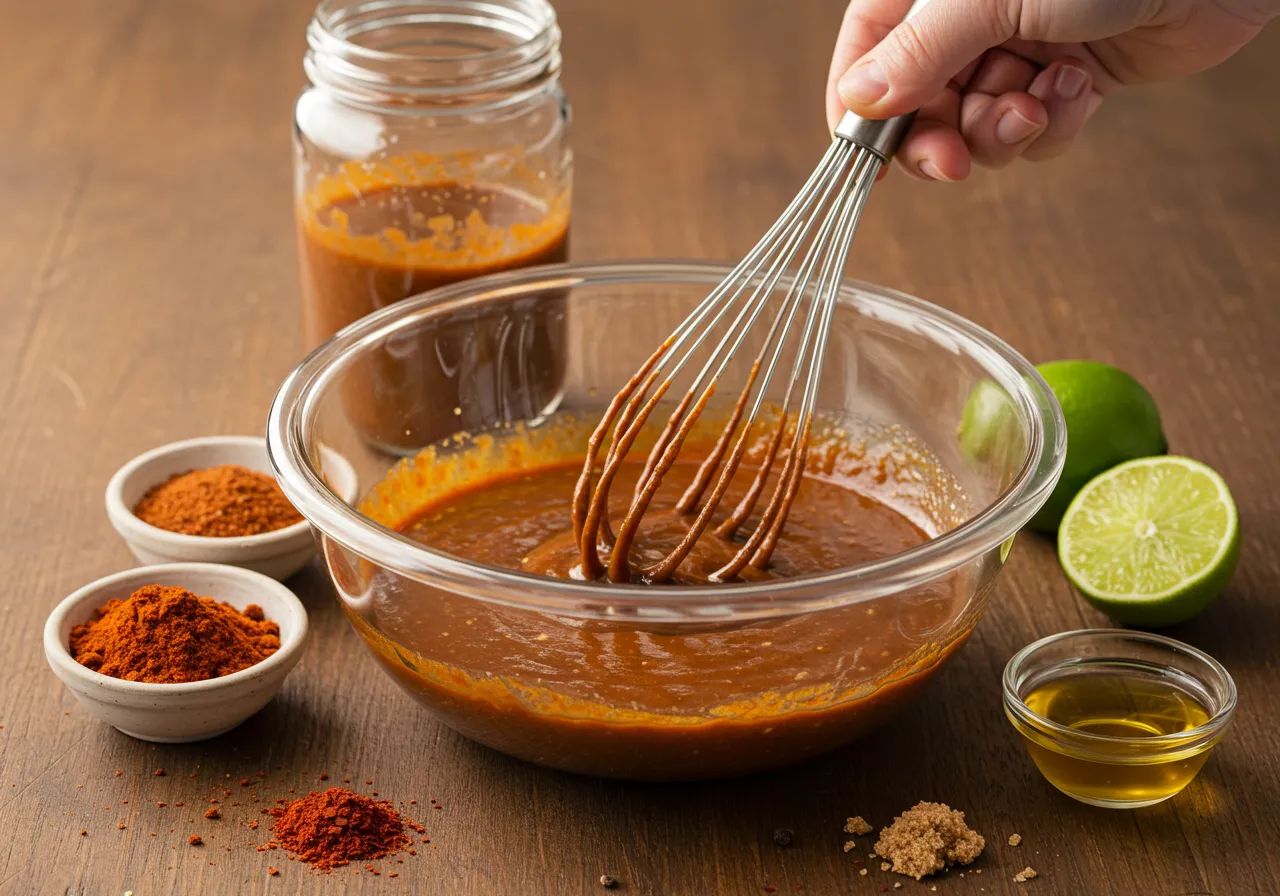
For a deeper exploration of tomato-based sauces that can inspire a Tex-Mex sauce variation, check out How to Make Tomato Sauce at Home.
Variations to Try
Tex-Mex sauce is endlessly versatile, with countless ways to customize it. Here are some suggestions to help you begin.
Tomato-Based Fajita Sauce: For a richer flavor, add half a cup of tomato puree. This variation works particularly well with beef fajitas, as the tomato base complements the robust flavors of the meat.
Chipotle-Infused Fajita Sauce: Blend in one or two chipotle peppers with adobo sauce for a smoky, spicy kick. This version pairs wonderfully with shrimp or grilled vegetables.
Creamy Fajita Sauce: Add two tablespoons of sour cream, Greek yogurt, or mayonnaise to create a creamy texture. This variation is perfect as a drizzle for tacos or burrito bowls.
Citrus-Herb Fajita Sauce: Incorporate orange juice and fresh cilantro for a bright, zesty twist. This version is ideal for chicken fajitas.
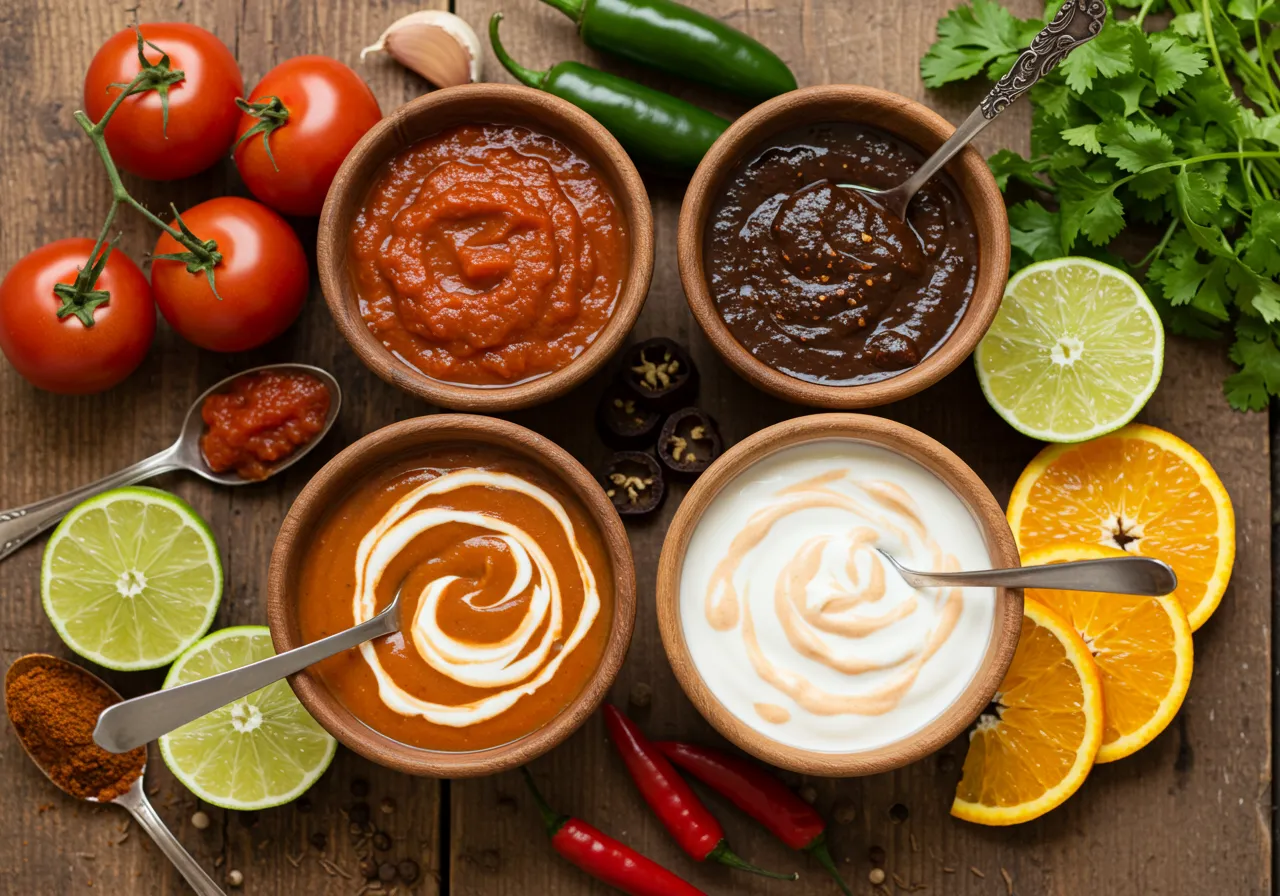
For a deeper exploration of Tex-Mex sauce check out The Difference Between Authentic Mexican Food & Tex-Mex Food
How to Use Fajita Sauce
One of the best things about Tex-Mex sauce is its versatility. Whether you’re preparing a quick weeknight dinner or a meal for guests, this sauce has you covered.
Marinade: Fajita sauce is a fantastic marinade for proteins like chicken, beef, or shrimp. Marinate your meat for at least 30 minutes, or up to 24 hours for deeper flavor. The acidity in the lime juice helps tenderize the meat, while the spices infuse it with rich flavor.
Vegetable Stir-Fry: Toss bell peppers, onions, and zucchini in Tex-Mex sauce before sautéing them in a hot skillet. The sauce caramelizes beautifully, creating a flavorful glaze.
Drizzle: Use Tex-Mex sauce as a finishing touch for tacos, rice bowls, or roasted vegetables. Its bold flavors make even the simplest dishes shine.
Slow Cooking: Add fajita sauce to slow-cooked meats or beans for an effortless, flavorful meal.
Tips for Perfect Fajita Sauce
Creating the perfect Tex-Mex sauce is all about balance and technique. Use these tips to maximize your success.
- Taste as You Go: Adjust the spices, sweetness, and acidity based on your preferences. A good Tex-Mex sauce should be bold but balanced.
- Use Fresh Ingredients: Fresh lime juice, garlic, and cilantro make a noticeable difference in flavor.
- Blend for Smoothness: If you prefer a silky texture, blend the sauce in a food processor or blender.
- High Heat for Cooking: When using Tex-Mex sauce in a skillet, ensure the pan is hot to achieve a good sear on meats and vegetables.

FAQs About Fajita Sauce
Can I use fajita sauce for other dishes?
Absolutely! Fajita sauce isn’t just for fajitas. Use it as a salad dressing, a dip for bread, or even a glaze for roasted vegetables.
How long does homemade fajita sauce last?
Stored in an airtight container in the fridge, Tex-Mex sauce stays fresh for about a week. To store it for a longer period, freeze in small portions.
Is fajita sauce gluten-free?
Most homemade recipes are naturally gluten-free. However, always check your spices and additional ingredients to ensure compliance.
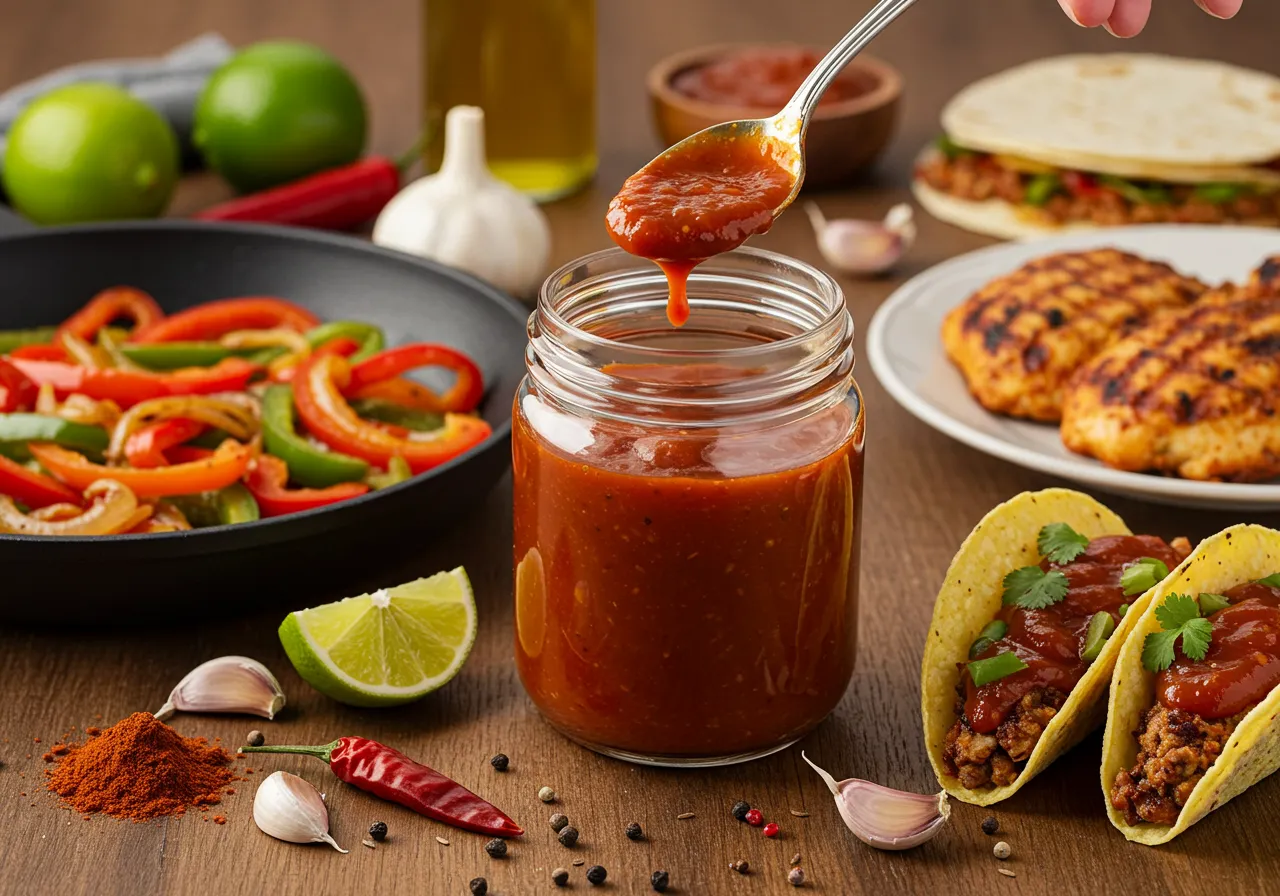
Final Thoughts
Tex-Mex sauce is a must-have in your kitchen if you love bold, vibrant flavors. Its versatility means you can experiment endlessly, creating variations that suit your tastes and dietary needs. By understanding its core ingredients and mastering the basic recipe, you’ll have a go-to sauce that elevates everything from weeknight dinners to special occasions. Whether you’re marinating meats, sautéing vegetables, or drizzling it over a finished dish, Tex-Mex sauce guarantees delicious results every time. Get creative and make it your own!

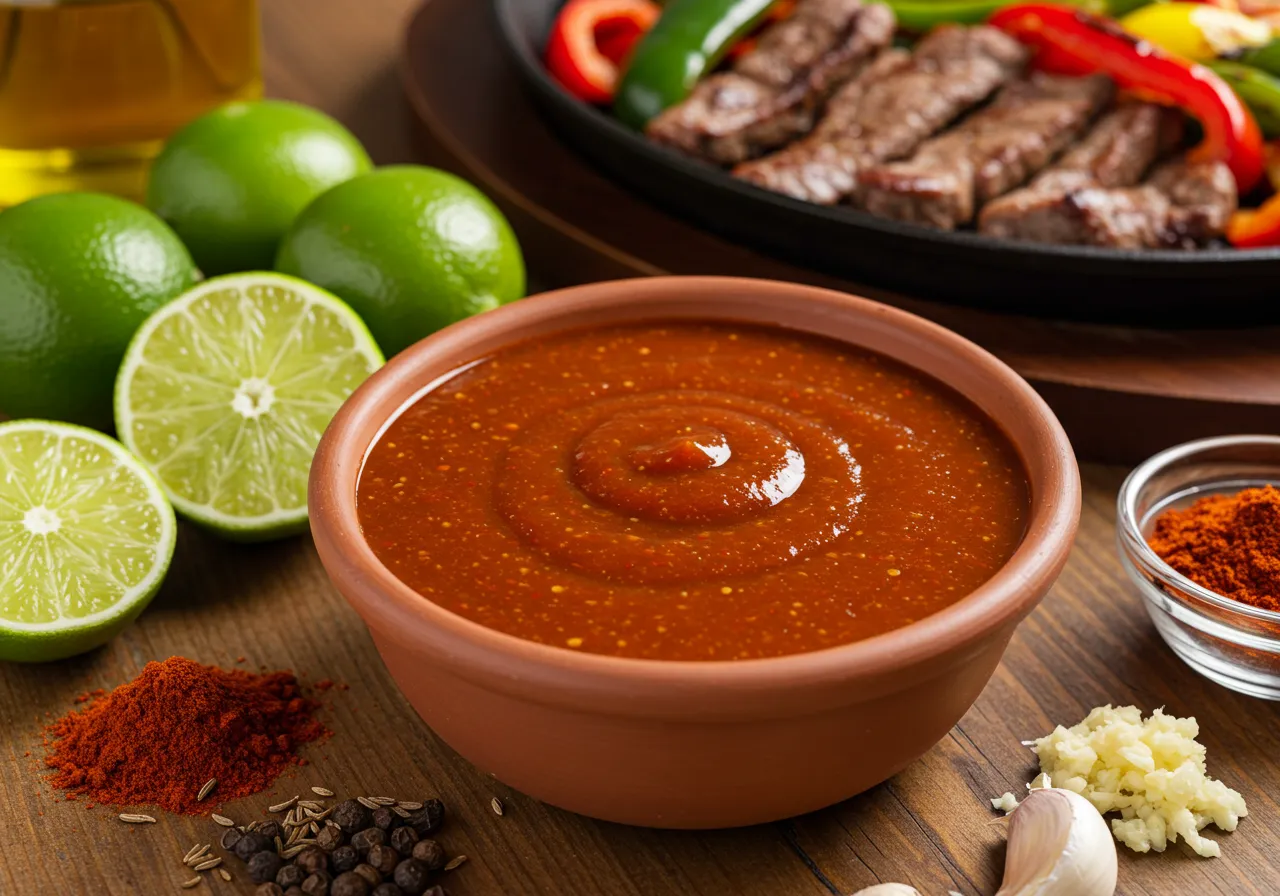
1 thought on “The Ultimate Guide to Making and Using Fajita Sauce”